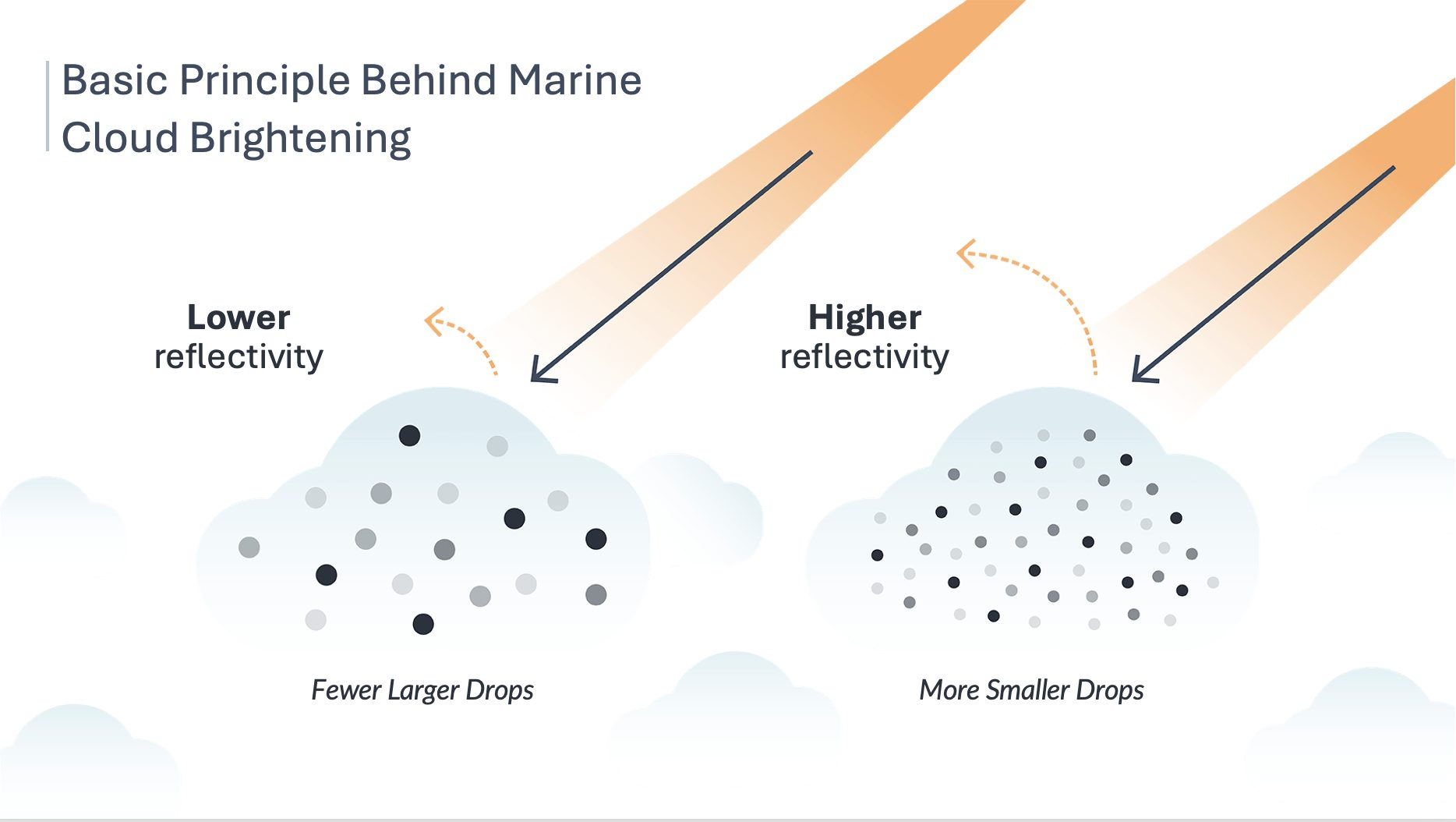- Filter By :
- Geography
- History
- Indian Heritage & Culture
- Indian Society
-
Q. What is Marine Cloud Brightening? Discuss its potential benefits and risks in the context of mitigating climate change. (250 words)
20 May, 2024 GS Paper 1 GeographyApproach
- Introduce by defining Marine Cloud Brightening
- Delve into potential benefits of MCB
- Highlight significant risks associated with it
- Conclude positively.
Introduction
Marine Cloud Brightening (MCB) is a proposed geoengineering technique that aims to mitigate the effects of climate change by increasing the reflectivity of low-level marine clouds, thereby reflecting more incoming sunlight back into space and reducing the amount of solar radiation absorbed by the Earth's surface.
- The process involves spraying a fine mist of seawater particles into the atmosphere, which act as cloud condensation nuclei and promote the formation of brighter, more reflective clouds.
- These clouds have a higher albedo (reflectivity) and can reflect more incoming sunlight, potentially cooling the Earth's surface.
Body
Potential Benefits:
- Cooling Effect: MCB has the potential to reduce global temperatures by reflecting more sunlight back into space, potentially mitigating the effects of climate change caused by greenhouse gas emissions.
- MCB could lessen extreme ocean heat, potentially safeguarding marine ecosystems like coral reefs facing bleaching threats.
- Buying Time for Emissions Cuts: MCB could provide a buffer while we transition to cleaner energy sources.
- This buying time could allow for deeper cuts in emissions and avoid reaching catastrophic tipping points, like the irreversible melting of polar ice caps.
- Localized Impact: Unlike other geoengineering techniques that aim to achieve global cooling, MCB can be targeted to specific regions, allowing for more localized climate interventions.
- For example, MCB could be deployed in areas particularly vulnerable to rising sea levels or extreme heat events.
- Reversibility: The effects of MCB are relatively short-lived, and if stopped, the Earth's climate would return to its previous state within a few years, making it a potentially reversible technique.
- Cost-effectiveness: Compared to other geoengineering techniques, MCB is considered relatively inexpensive and technologically feasible.
Potential Risks:
- Unintended Consequences: Like any large-scale intervention in the Earth's climate system, MCB carries the risk of unintended consequences that are difficult to predict, such as changes in precipitation patterns, ocean circulation, and ecosystem disruptions.
- Limited Scope: MCB might not be effective in all regions. Cloud types and atmospheric conditions can significantly impact its effectiveness.
- Deploying MCB in the tropics, where clouds are already quite reflective, would likely have minimal impact on global warming.
- Spatial Variability: The cooling effects of MCB may not be evenly distributed, leading to regional disparities and potential conflicts over resource allocation and deployment.
- Moral Hazard: The perceived effectiveness of MCB could potentially reduce the urgency to address the root causes of climate change, such as reducing greenhouse gas emissions.
- International Governance: Deploying MCB unilaterally could trigger international disputes. Effective international agreements would be necessary for responsible implementation.
Conclusion
While MCB holds promise as a potential climate change mitigation strategy, its deployment on a large scale would require careful consideration of the risks, as well as robust governance frameworks and international cooperation to ensure responsible implementation and monitoring.
To get PDF version, Please click on "Print PDF" button.
Print PDF





